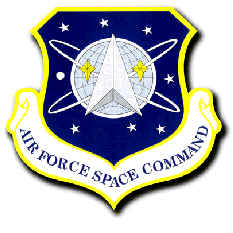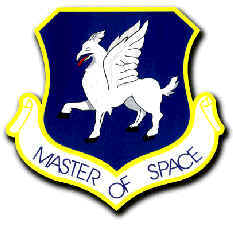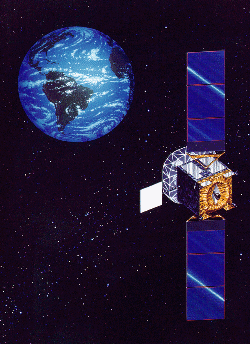
FACT SHEET
50th Space Wing Public Affairs Office

 |
FACT SHEET 50th Space Wing Public Affairs Office |
 |
Ultrahigh Frequency Follow-On |
 |
Mission The Ultrahigh Frequency Follow-on (commonly referred to as UFO) will be a nine satellite constellation for communications between U.S. Navy ships, submarines, aircraft, ground units, and global ground stations. UFO will replace the existing Fleet Satellite Communications System. Each UFO satellite possesses 39 UHF communications channels (a 70 percent increase over Fleet Satellites). The first UHF F/O was launched on March 25, 1993. The Atlas II rocket booster malfunctioned placing the spacecraft in a dangerously low orbit. After efforts by the 3rd Space Operations Squadron, Schriever AFB, Co., the satellite was prevented from crashing back to earth and was finally placed in a safe, though unusable, orbit. The second UHF F/O satellite was launched September 3, 1993, and was successfully placed in its proper orbit, becoming the first fully operational spacecraft in a planned nine-satellite constellation. Seven additional satellites have been launched and placed in their proper orbits. The launch of the final satellite in the constellation is planned for fall 1999. |
Command and control authority for Flights 2-9 have been officially turned over from the 3rd Space Operations Squadron to the Naval Space Operations Center at Pt. Mugu, Calif. This includes mission planning, maneuvers, and contact support. Features The satellites are arranged in pairs in four different locations above the earth for global coverage. The Air Force Satellite Control Network and the Navy Satellite Control Stations provides telemetry, tracking, and commanding coverage. Each satellite provides 39 channels for Ultrahigh Frequency two-way communications, a Super High Frequency anti-jam, command and tracking link and communication uplink for fleet broadcast over UHF, and uses S-band communications for the Space Ground Link Subsystem. Flights 4-10 (Block II) also carry an Extremely High Frequency (EHF) package for secure, anti-jam communications, telemetry and commanding. Flights 8-10 (Block III) add a Global Broadcast Service (GBS) package for one-way, high data-rate communications in place of the SHF package. The UFO satellite is built by Hughes Aircraft Company and is based on their modular bolt together HS 601 design. Each satellite has a projected orbital operational life of 14 years with an on-orbit storage life of 4 years. The satellite is designed to operate for 30 days without ground contact if necessary. General Characteristics Weight: 2600 pounds Orbit altitude: geosynchronous orbit - 22,250 miles Power Plant: Two deployed three-panel solar array wings supplying approximately 2400 watts. In addition, a single 24-cell nickel-hydrogen (NiH2) battery provides power during eclipse operations. (Block III satellites have two four-panel solar wings supplying approximately 3800 W and a 32-cell battery). Dimensions: 9 1/2 feet high and 60 1/2 feet long Launch Vehicle: Atlas-Centaur space booster Launch Site: Cape Canaveral Air Station, Fla. Primary Contractor: Hughes Aircraft Company
50th Space Wing Public
Affairs |